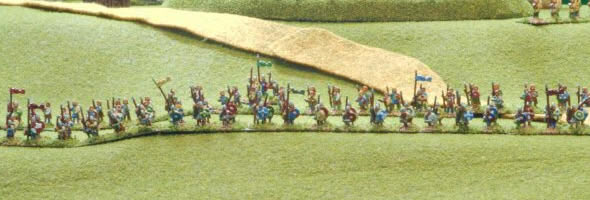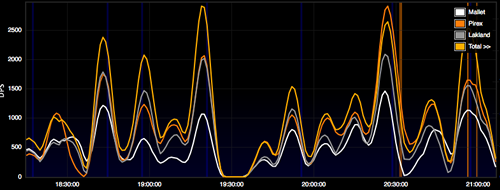
There’s been much talk lately, on WoM and elsewhere, of in-game “exploits” and their proper punishment. Most recently, Exodus has been censured with a 72-hour suspension for taking using Yogg’s mechanics to their advantage. A while back, Karatechop of Vek’nilash received a permanent ban for using the god-mode Martin Fury shirt. Even further in distant memory, Ensidia publicly admitted to using a buff from Freya trash to complete a “mathematically impossible” hard-mode Hodir. In this post I am going to muse about what is right, what is fair, and what is permissible in the World of Warcraft. Let me make clear that I don’t condone cheating, but it does make me sad when players get punished for actions that they don’t realize are wrong, especially when there’s no clear rule or precedent.
On Play
In such ambiguous cases, I almost always sympathize with the so-called cheaters. To explain why, I’ll share a few thoughts on the philosophical bent of World of Warcraft. First of all, it presents itself as a game. In any ludic world (ludic being a fancy pants academic word to describe an environment in which play is permitted), the “rules” are relaxed. Don Quijote, for example, operates in a ludic world of his own creation. Thus, the self-styled knight is exempt from rules that apply to “normal” people. Don Quijote has created his own “rules” as he plays at being a knight–according to him, he no longer needs to eat or sleep, he doesn’t have to pay when he stays at an inn, his wounds will magically heal when he applies a mixture of rosemary, olive oil, and salt to them, and windmills and other giants of industry deserve a good beating.
The World of Warcraft is by definition ludic, and no one, least of all Blizzard, should be surprised when people do things that aren’t exactly normal. In fact, I’d say that gaming encourages players to test the limits. Is theorycrafting an exploit? I should say not. But when players of a game optimize, they tend to do so to the limit of their abilities. I would say Exodus’ kill of Yogg+0 was pretty darned clever, even though it’s been ruled illegal. I’m sure I wouldn’t do the same thing myself–because I’m both too dumb to figure it out and too fearful to follow through with it. Without a precedent to tell me them that the technique was wrong, how was Exodus supposed to know? What they did falls under the aegis of being creative on a boss kill. Sure, I’m much more likely to do things like Wowwiki says I should, but how do the pioneers draw the line between brilliance and exploit? After all, the word “exploit” is used just as often in a positive light, to mean a great deed, as it is to indicate taking unfair advantage.
On War
The idea of the “exploit” as a masterful feat brings me to my next point. We all play a game called World of WARcraft. Notice the war in Warcraft? While the old proverb claims that “all’s fair in love and war,” most educated readers probably realize that warfare does in fact have rules. It always has, from ancient times until now, and these rules are culturally determined. The rules of war work to preserve life, particularly among civilians and other innocents, but also among soldiers themselves. However, these rules of engagement are always changing. For example, the insurgency in Iraq and Afghanistan is helping to establish new parameters for warfare–for better or for worse.
For me personally, I am a pacifist. No one is ever going to convince me that there is glory to be found in killing and maiming other human beings. However, I’m fascinated by battlefields. They bring out feelings of sadness, loss, and anger at the stupidity of humanity–and yes, I’m just the kind of person to wallow in such melancholy imaginings. I recently stopped at Gettysburg on my drive from NY to NC–there are few things that bring me to tears, but reflecting on human suffering on a mass scale does it every time. As a southerner and a passionate advocate of equal rights for all, any Civil War battlefield evokes in me a mixture of guilt and nostalgia that I can’t quite get anywhere else. Since my Gettysburg visit, I’ve been reading up on the different generals whose names I saw on the monuments. I can tell you based on even a little reading that in times of war, I’d rather serve under a general who pushes the boundaries than one who does not. If I have to be an ordinary Confederate soldier, I’m probably going to be killed or mutilated anyway, my amputated limbs stacked up like cordwood outside the makeshift camp hospital, but give me Longstreet over Lee any day as my commander. In the case of the Civil War, an ignominious, guerilla-style defense kept people alive where a gallant frontal attack would get them killed.
The point is that the rules of war are not fixed. What worked for Napoleon won’t work for Lee, and what seems most “honorable” is often most stupid. In our World of Warcraft, the designers should expect people to be constantly testing the limits. That’s why I don’t support banning people for exploits–essentially, you’re banning players for an excessively winning strategy. It’s hard to argue that Karatechop’s magic shirt technique was a failure, though it certainly was a cheat. However, killing a virtual robot without hardly trying does not seem like a “war” crime to me–no innocent bystanders, after all, were injured in the course of said illegal kill. In cases where malice is not present, what I would do is suspend rather than ban the player. Why would Blizzard want to ban people for using the best strategem available in their personal “war” against internet dragons?
On Honor
Along with play and warfare, I’d say the third principle that the World of Warcraft depends on is honor. We’re encouraged to seek out “honor” and “honor points” through PvP–which means the brutal killing of “enemy” players. Many quest texts also appeal to our sense of personal honor. “Honor” however, is not one singular concept but rather something that is both culturally and individually determined. Before commenters chime in that I have no idea what honor is, I’d like to say that in my day job as an academic, I study chivalry. This means, among other things, that King Arthur and his very honorable knights might as well be my best buddies. I think I have a good idea what honor is in the chivalric sense. It means a sort of personal integrity, an adherence to a code. However, for the Knights of the Round Table, this code is rather idiosyncratic. Certain parts are common to all. For example, an honorable knight aids the helpless, shows mercy when his opponent yields, keeps his bargains, and behaves himself when he is a guest in someone else’s home. However, for some knights, honor comes to include not only these secular virtues but also religious ones like purity and chastity (Percival or Galahad), while for others, “honor” is pretty close to the aphorism that might makes right (Yvain or Tristan). “Honor” also sometimes means defending oneself against real or perceived insults, often with bloody results. Honor is always idiosyncratic, and it has always caused social trouble–just ask Desdemona how she feels about the concept!
Now, since “honor” in World of Warcraft is tied to the PvP system, isn’t it closer to the “might makes right” model? How then, are we supposed to know how to be “honorable” when it comes to in-game bugs? I’d say there are some serious philosophical conflicts in WoW. The case that most stands out to me is the Martin Fury shirt, probably because the two players involved, Karatechop and Leroyspeltz, play on my old server Vek’nilash and are both acquaintances of mine. Leroy and I were in the same casual guild for about a year and were co-officers for part of that time. I can testify to Leroy’s lack of malice–he’s the kind of happy-go-lucky casual player that Blizzard is usually happy to support. In fact, my first response when I saw the story was not “Leroy, you cheater!” but “Leroy, how could you be so stupid!” My feeling is that Leroy, and probably Karatechop too, are innocent victims of their own failure to understand how Blizzard works.
On Fear
In a game where one earns “honor points” for randomly killing people whom they have no reason to fight as they’re trying to finish their Hodir dailies, how do I, as a player, know what I should and should not do? I do, in fact, wish to be as “honorable” as Galahad …but it’s hard to figure out what that means in WoW. I’d have to say that my code of personal honor in WoW has to do with how I treat other players (kindly, of course) rather than how I approach game mechanics. As for my philosophy on PvE, I turn to Machiavelli, who tells us that if one wants to be an effective leader, it is far better to be feared than loved. I fear, rather than love, the Blizzard developers. I have spent quite a lot of time building Syd and developing an in-game social network. I couldn’t bear to lose her. In the whole Martin Fury debacle, the only thing that bothers me from the players’ side is Karatechop’s cavalier attitude toward getting his guild and raid members suspended. I would be furious if I were a victim of such shenanigans. I would be grieved and regretful if I had inadvertedly deprived anyone of their character for any length of time.
Because I fear Blizzard, I take a pretty hard line on cheating and exploits for myself. I won’t buy gold or fight a boss in a doorway because it’s easier, even though neither of those actions seem “malicious” to me. Sure, on Prince Malchezzar my raid spent quite a lot of time figuring out the best “spot”–but I can also tell you that we never found the magic nook or cranny that made Prince beg for mercy and give us our helmets for free. If we had, I probably would have insisted that we take him back to the middle. I’m all for innovation, but I err on the side of caution–not because exploiting feels “wrong,” but because I fear the consequences. Heck, I even worry if I make a lot of money in the same day on the AH. Sometimes I get lucky to the tune of a couple thousand gold, and I find myself looking over my shoulder. I do the same thing whenever I see a police car on the highway, even though I never speed.
On Right and Wrong
Many things that I feel are “wrong,” like corpse camping a lowbie or shouting racial slurs in General chat, are never punished in game. Many actions that seem less dishonorable, like gold-buying or using an item one received in the mail, result in permanent bans. How am I to tell what is right and what is wrong? My internal standard for good and evil doesn’t seem to work when it comes to WoW. The Terms of Use itself is rather vague, and it cannot serve as my guide to virtue and prosperity. As a player, I try to do my best by others (you’ll never catch me ganking Horde) and err on the side of caution when it comes to the Terms of Use. After all, the TOU pretty much declares that whatever Blizzard decides is wrong, IS wrong. That sounds pretty Machiavellian to me.







